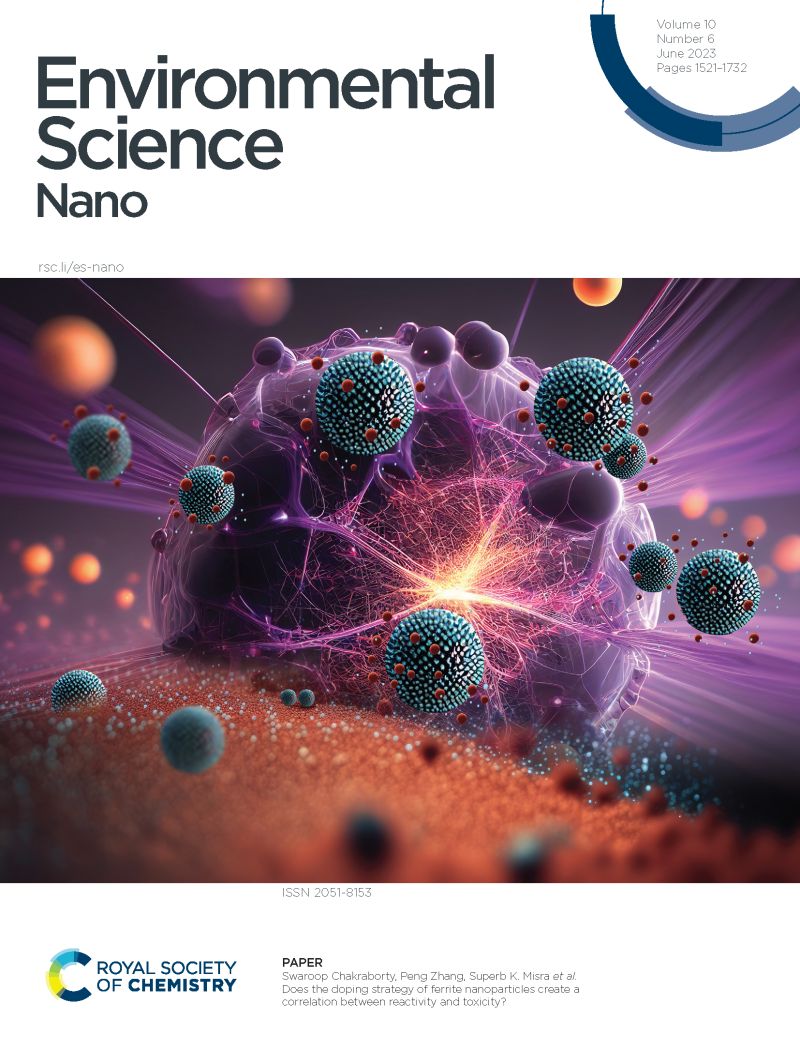Design and Fabrication of Phosphazene-based Porous Organic Materials for Iodine Adsorption
IF 5.8
2区 环境科学与生态学
Q1 CHEMISTRY, MULTIDISCIPLINARY
引用次数: 0
Abstract
Iodine plays a critical role in nuclear industries, medicine, and environmental monitoring, often occurring in trace amounts in wastewater and contaminated environments. Despite the exploration of various adsorbents for iodine capture, many exhibit limitations such as low adsorption capacities, poor performance, and limited reusability. Therefore, novel materials with enhanced iodine extraction capabilities are needed. Polymer-based adsorbents offer substantial promise due to their unique chemical structures and rich functional groups. Via nucleophilic substitution of hexachlorocyclotriphosphazene (HCCP) with various amines, five polyphosphazene polymers—PDD-HCCP, BDP-HCCP, BDD-HCCP, TAPA-HCCP, and TAPDA-HCCP—were synthesized in this study.. These polymers exhibited excellent iodine adsorption capacity, with TAPDA-HCCP achieving the highest theoretical capacity in both iodine vapor and aqueous phases (I₂: 7.83 g·g⁻¹, CH₃I: 1.26 g·g⁻¹, Iodine water: 3.69 g·g⁻¹, iodine cyclohexane: 1.15 g·g⁻¹). In aqueous iodine adsorption experiments, the kinetics followed a pseudo-second-order model, indicating chemical adsorption as the dominant mechanism. Specifically, equilibrium was reached within 240 min, with PDD-HCCP and TAPDA-HCCP achieving iodine removal efficiencies greater than 90%. The adsorption isotherms fitted the Langmuir model, suggesting monolayer adsorption. FT-IR and XPS analyses confirmed that the -NH, P=N-P, and sp³ N groups play a crucial role in forming charge-transfer complexes with iodine. These results highlight the potential of polyphosphazene-based adsorbents for efficient iodine capture in environmental applications.设计和制造用于碘吸附的磷苯基多孔有机材料
碘在核工业、医学和环境监测中起着至关重要的作用,通常以微量形式存在于废水和受污染的环境中。尽管人们探索了各种用于碘捕获的吸附剂,但许多吸附剂都表现出吸附能力低、性能差和可重复使用性有限等局限性。因此,需要能增强碘萃取能力的新型材料。聚合物吸附剂因其独特的化学结构和丰富的官能团而大有可为。本研究通过六氯环三磷苯(HCCP)与各种胺的亲核取代,合成了五种聚磷腈聚合物--PDD-HCCP、BDP-HCCP、BDD-HCCP、TAPA-HCCP 和 TAPDA-HCCP。这些聚合物表现出优异的碘吸附能力,其中 TAPDA-HCCP 在碘蒸气相和水相中的理论吸附能力最高(I₂:7.83 g-g-¹,CH₃I:1.26 g-g-¹,碘水:3.69 g-g-¹,CH₃I:1.26 g-g-¹):3.69 克-克-¹,碘环己烷:1.15 克-克-¹)。在水性碘吸附实验中,动力学遵循伪二阶模型,表明化学吸附是主要机制。具体而言,PDD-HCP 和 TAPDA-HCCP 在 240 分钟内达到平衡,碘去除率超过 90%。吸附等温线符合 Langmuir 模型,表明是单层吸附。傅立叶变换红外光谱和 XPS 分析证实,-NH、P=N-P 和 sp³ N 基团在与碘形成电荷转移复合物方面起着关键作用。这些结果凸显了聚磷苯基吸附剂在环境应用中高效捕获碘的潜力。
本文章由计算机程序翻译,如有差异,请以英文原文为准。
求助全文
约1分钟内获得全文
求助全文
来源期刊

Environmental Science: Nano
CHEMISTRY, MULTIDISCIPLINARY-ENVIRONMENTAL SCIENCES
CiteScore
12.20
自引率
5.50%
发文量
290
审稿时长
2.1 months
期刊介绍:
Environmental Science: Nano serves as a comprehensive and high-impact peer-reviewed source of information on the design and demonstration of engineered nanomaterials for environment-based applications. It also covers the interactions between engineered, natural, and incidental nanomaterials with biological and environmental systems. This scope includes, but is not limited to, the following topic areas:
Novel nanomaterial-based applications for water, air, soil, food, and energy sustainability
Nanomaterial interactions with biological systems and nanotoxicology
Environmental fate, reactivity, and transformations of nanoscale materials
Nanoscale processes in the environment
Sustainable nanotechnology including rational nanomaterial design, life cycle assessment, risk/benefit analysis
 求助内容:
求助内容: 应助结果提醒方式:
应助结果提醒方式:


